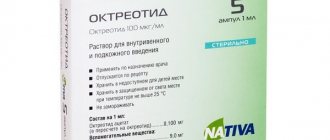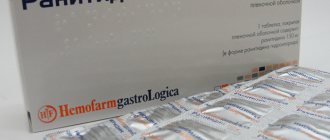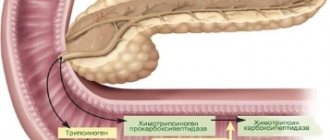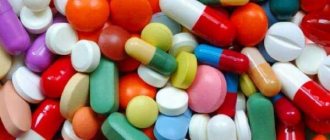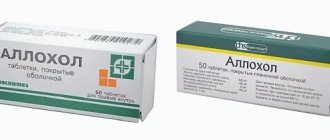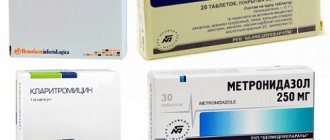Any pathology of the pancreas is accompanied by a greater or lesser degree of disturbance of external secretion.
This could be an inflammatory process, an operation to remove part of an organ, a cyst, or a deterioration in blood supply. Creon for pancreatitis is necessary not only to compensate for enzyme deficiency, but also relieves pain and swelling. Doctors prescribe the drug to restore and support the digestive process in cancer patients after a course of radiation and chemotherapy, and in old age with organ atrophy due to atherosclerosis of the adductor arteries. In some cases, it is more profitable to use analogues that do not differ in composition.
More information about the drug
The enzyme action of the drug and the clear clinical response to its use have undeniable advantages over other similar drugs due to: an improved dosage form; optimal combination of enzymes (amylase, lipase, proteases); easily adjustable dose, which is very important in pediatric practice. Its positive effect on the pancreas in acute pancreatitis is expressed in the rapid relief of pain when eating, normalization of the frequency and consistency of natural bowel movements, the disappearance of flatulence, stabilization and weight gain.
As a result, it becomes possible to expand the diet by introducing fats, which will make nutrition more complete. Creon is also included in complex rehabilitation therapy for patients who have undergone pancreatic surgery (resection, bypass).
The originality of the action of the drug lies in the use of many single doses. Let's look at the differences between Creon and single-shell drugs. The maximum size of drug microspheres is 1.5 mm. This is the optimal size for passing them through the pylorus of the stomach, the throughput of which is limited to 2 mm. After the gelatin capsule dissolves in the stomach, the released microspheres are mixed with the bolus of food and easily reach the small intestine, mixing with intestinal contents.
In the duodenum, in turn, the spherical membrane is destroyed and enzymes are released, which immediately get to work breaking down fats, proteins, and starch. While ordinary tablets with enzymes linger in the stomach much longer than food, and often enter the duodenum (the place where enzymes work) with a great delay. And often they are completely excreted unused in the feces.
The composition and degree of enzyme activity in the drug are ideal for replacing exocrine (external) pancreatic failure. Creon is able to relieve pancreatic pain. The analgesic effect is the result of the group work of all components of pancreatin. But a special role here is played by highly active trypsin (a group of proteases), which has an antisecretory effect and functionally calms the gland in the acute form of the disease.
It has the trade name Kreon 25000. ATX code is A09AA02.
What kind of Creon is there?
Creon is available in capsules with varying degrees of activity:
- Creon 10,000 contains: 10,000 IU lipase, 8000 IU amylase, 600 IU protease
- Creon 25000 contains: 25,000 IU lipase, 18,000 IU amylase, 1000 IU protease.
- Creon 40,000 contains: 40,000 IU lipase, 25,000 IU amylase, 1600 IU protease.
Depending on the severity of exocrine pancreatic insufficiency, a single dose of the drug varies from 10,000 IU to 25,000 IU of lipase per dose, in severe cases - 50,000 IU. In this regard, different dosages of the drug are provided.
Methods for treating chronic pancreatitis using an enzyme preparation
The long course of chronic pancreatitis requires constant support of secretory pancreatic insufficiency to ensure food digestion. Without enzymes, patients lose weight, suffer from diarrhea, and lose electrolytes. Beneficial substances are not absorbed, but are excreted in feces.
The main treatment requires lifetime compensation. In medicine it is called “replacement therapy”. Indications for the use of Creon or other enzymatic agents are determined by analysis: loss of fat in feces more than 15 g/day, increasing protein-energy deficiency.
The patient may require combinations of Creon-10000 and Creon-25000. For example, before breakfast, take one capsule of 10,000 units; at lunch, instead of two of 10,000, it is more convenient to take one of 25,000. Different dosages of the drug allow the doctor to create precise treatment regimens. Capsules of 40,000 units are used in severe cases.
The criterion for the effectiveness of replacement therapy and adequate use of dosage is weight gain, normalization of stool, and reduction of flatulence.
Rules for the use of Creon for remission of pancreatitis and for the prevention of exacerbations
During the remission stage of chronic pancreatitis, the strictness of the diet is somewhat weakened. The dosage of Creon can be reduced to 1 capsule in 10,000. For the purpose of long-term maintenance therapy, analogues of the drug are suitable:
All contain the necessary enzyme kit. They differ in price (Panzinorm is the cheapest, Ermital is more expensive than Creon). Outside of exacerbation, they help prevent diarrhea and pain.
Composition and principle of action of the drug
Today, Creon is considered the best remedy for normalizing the digestive process. It is recommended to take Creon both in the chronic form of the pathology and during periods of exacerbation. It perfectly fights the disease, having a positive effect on the functioning of the digestive system. The medicine is produced in the form of capsules. This drug is of animal origin. It contains enzymes obtained from the pancreas of pigs.
Creon for chronic pancreatitis and Creon for exacerbation of pancreatitis is the best remedy that can normalize the digestion process. The main active component of the drug is pancreatin. As for additional substances, these include:
- macrogol;
- dibutyl phthalate;
- paraffin in liquid form;
- dimethicone;
- Hypromellose phthalate.
The principle of action of the drug is that under the influence of the active components included in its composition, there is an improvement in material metabolism.
Proteins, fats and carbohydrates begin to be absorbed very quickly. After the capsule enters the body, it is not completely broken down in the stomach, but moves into the intestines, where minimicrospheres are released, providing the desired lipolytic and proteolytic effect.
The main active components are protease, lipase and amylase. They help break down nutrients. Creon for chronic pancreatitis is considered very effective, as it contains all the necessary components for proper enzyme replacement treatment.
The drug contains an optimal ratio of pancreatic enzymes, which provide positive results in therapy.
Minimicrospheres have unique properties that allow the drug to be evenly distributed throughout the food and ensure good digestion.
The product is available in three dosage options:
- 40000 IU;
- 25000 IU;
- 10000 IU.
The most commonly used is Creon 10000, which makes pancreatitis easier when taken. The clinical effectiveness of the product has been proven by many studies. It is considered one of the best progressive drugs in the treatment of inflammation of the pancreas.
A distinctive feature of the drug from similar pancreatins is its special form of transporting enzymes into the duodenum. In this regard, it is included in the group of two-shell type products.
Each capsule contains pancreatin, which dissolves in the intestines. The drug is very popular because it has pronounced effects and
Effect on the organ
The pancreas performs a number of important functions in the digestive system, one of which is the process of digesting food. When incoming food enters the stomach cavity, a large volume of secretion is released, which is necessary for the complete digestion and absorption of food. Any disturbances in the organ cause an inflammatory process, which reduces the production of pancreatic juice.
This leads to a deterioration in the digestion of food, which moves further in this state through the gastrointestinal tract. Part of the undigested food is deposited on the walls of the stomach, causing processes to disrupt the bacterial microflora, and mold forms. Rotting processes have a detrimental effect not only on the stomach, but also on all organs of the digestive tract. Unpleasant symptoms appear in the form of belching, heartburn, flatulence, increased gas formation, stool disorders, and intoxication.
If food is poorly digested and discomfort and unpleasant symptoms appear, the presence of pancreatitis clearly characterizes it, which requires immediate treatment. The treatment of pancreatitis requires a comprehensive approach. One of the main requirements in therapy is drug treatment. When the first unpleasant signs of pathology appear, you should immediately seek help from a specialist.
An experienced gastroenterologist will conduct a series of diagnostic and laboratory tests, study the clinical picture in detail, and prescribe a drug. The drug Creon is excellent for these purposes. It is a multienzyme drug. It has a beneficial effect on the condition of the organ, normalizing secretion.
Thanks to the medication, the full functions of the pancreas are restored, as a result of which all incoming food is well digested and absorbed. The active ingredients actively break down and transport fats and carbohydrates into the intestinal cavity. The specific dosage form looks like a cylindrical sphere, each of which is placed in a special protective capsule.
Indications for use of the drug
Creon is often taken for pain in the pancreas. According to the results of the research, it was established that the enzymes were completely broken down; intact elements were not detected.
This is considered one of the advantages of capsules, since thanks to it, the active substances reach the intestines, where the desired effect occurs. The protein structure allows enzymes to pass through the gastrointestinal tract and break down gradually, forming amino acids and peptides.
The drug is used to solve the following problems:
- chronic pancreatitis;
- cystic fibrosis;
- different types of hepatitis;
- cirrhosis of the liver;
- pancreatomy;
- gastrectomy;
- pancreatic cancer;
- operations on the stomach and intestines;
- eating junk food;
- recovery period after removal of the pancreas;
- blocked ducts;
- decreased enzyme production caused by age-related changes.
The remedy helps not only with pancreatitis, but also with other pathologies of the pancreas.
Pancreatitis and Creon are related concepts. The drug for this disease is considered one of the best. It can also be used as a recovery drug after gallbladder removal, blocked ducts in the liver, cirrhosis, intestinal and stomach problems.
During exacerbation
Creon is well tolerated by patients, but during exacerbation of pancreatitis it should not be taken.
It’s just that in such a state, patients experience an active development of inflammatory processes, which, when taking Creon capsules, provokes the occurrence of pronounced adverse reactions.
If a patient begins to take Creon during an exacerbation of pancreatitis, then he will begin to experience symptoms of severe diarrhea or constipation, nausea and vomiting reactions, stomach pain and general weakness of the body, as well as allergic reactions.
On average, Creon is prescribed one and a half to two weeks after an exacerbation, when the inflammatory process and pain symptoms subside and the patient’s diet begins to expand.
The timing of drug administration is prescribed individually and depends on the severity of the exacerbation, the severity of enzymatic deficiency and other individual indicators.
In addition, do not forget that long-term use of enzyme preparations suppresses the pancreas’s own functions. If immediately after a pancreatic exacerbation the body needs the help of these enzymes, then in the future it may even become undesirable.
To avoid adverse reactions, it is necessary to refrain from self-medication and take medications prescribed exclusively by a specialist.
Practice shows that it is violation of medical prescriptions that is the main cause of unwanted side reactions.
How and in what quantities is it taken?
The drug is really effective, which is why many patients use it. Many people are interested in how to take Creon for pancreatitis? The dosage of the product is set based on individual indicators. The form of the disease and the degree of its neglect are also taken into account. In order for the effect of taking to be as effective as possible, it is recommended to divide the one-time dosage into two parts, the first half of which is taken before meals, and the second - during.
During the treatment period, it is also necessary to adhere to a diet and take additional medications to ensure the proper functioning of the pancreas.
The capsule is taken whole and does not need to be chewed. In some cases, minimicrospheres can be mixed with liquid food that does not need to be chewed.
You need to take the capsules with a sufficient amount of liquid. The dosage of Creon for pancreatitis is determined individually. The symptoms and type of diet are taken into account. At the beginning of treatment, the recommended dosage is 1-2 capsules with meals, as well as 1 capsule with a light snack. The number of capsules per day can reach from 4 to 15 pieces.
As for children, the dosage for them will be less. If the baby is under 4 years old, each meal should contain no more than 500 units; if the child is over 4 years old, then no more than 1000 units. During the period of use of the product, it is necessary to drink a sufficient amount of liquid.
Age category
- Adults and children over 12 years old - One or two pills are prescribed with each meal.
- In children under 12 years of age - The dosage and course of treatment with the drug is determined by the doctor in each case individually.
The tablet can be taken with or after meals. It is recommended to take the medicine well with water. You should pay attention to one feature - the tablets must be swallowed, not chewed and try not to linger in the oral cavity. This is explained by the fact that some enzymes that make up the drug, when released in the mouth, can lead to the formation of numerous ulcers on the oral mucosa. The pills should be taken with a sufficient amount of water.
The doctor also decides how long to take the pills, depending on the nature of the pathological process: If indigestion is not associated with functional diseases of the gastrointestinal tract, but is caused by an unbalanced diet or poisoning, the duration of therapy can be 3-5 days. Recovery from surgery may also require taking the medication for one to two weeks.
If the need for medicine is caused by insufficient fermentation of the pancreas, then the use can last until the secretory function of the organ is restored, or for life (if during the course of the disease a significant amount of organ tissue has died and it can no longer work normally on its own).
How to take Creon for inflammation of the pancreas?
Any pathology of the pancreas is accompanied by a greater or lesser degree of disturbance of external secretion. This could be an inflammatory process, an operation to remove part of an organ, a cyst, or a deterioration in blood supply. Creon for pancreatitis is necessary not only to compensate for enzyme deficiency, but also relieves pain and swelling.
Doctors prescribe the drug to restore and support the digestive process in cancer patients after a course of radiation and chemotherapy, and in old age with organ atrophy due to atherosclerosis of the adductor arteries. In some cases, it is more profitable to use analogues that do not differ in composition.
A little about pancreatitis
In 40% of cases, the cause of acute pancreatitis is alcohol consumption, in the chronic form - up to 90%. Approximately 1/5 of patients suffer from gallbladder diseases (usually cholelithiasis). The influence of infection, taking medications with toxic effects (sulfonamides), and abdominal injuries cannot be ruled out.
In the acute stage of pancreatitis, the produced enzymes are activated ahead of time: if normally they are transformed into a working form only after entering the intestines with pancreatic juice, then during inflammation they are ready for action in the gland itself. Therefore, self-digestion of the organ begins. In this case, lipase (responsible for the breakdown of fats) causes fatty degeneration of cells, trypsin (digests proteins) promotes swelling, inflammation and death.
The acute course is accompanied by a rapid transition from the stage of edema to the addition of a purulent infection and the formation of foci of necrosis. Chronic pancreatitis is sluggish.
The destruction of the gland occurs gradually: with each exacerbation, the organ is replaced by non-functioning scar tissue. The clinic is dominated by symptoms of intoxication and digestive disorders.
Insufficient production of enzymes affects the inability to absorb nutrients from food that ensure the existence of the body.
Features of taking Creon for inflammation of the pancreas
Creon helps compensate for the deficiency of pancreatic enzymes. It should not be prescribed in the acute phase of inflammation, when an excess of its own products melts the gland. The drug is necessary to support digestion in chronic insufficiency.
The components of the active substance (pancreatin) are represented by a dried extract of the pancreas of pigs, close to human. It contains a strictly dosed composition of protease, lipase and amylase. Additional ingredients are included in the capsule. Dissolution begins only at the level of the duodenum, where alkalization of the contents occurs.
In the intestine, microspheres are released from the capsule, mixed with the food bolus and ensure sufficient digestion of proteins, carbohydrates and fats for their absorption. The patient does not suffer from pain, diarrhea, and maintains weight.
Important feature! Creon enzymes do not inhibit the functioning of the gland. The organ continues to secrete a reduced volume of pancreatic juice.
Treatment with Creon is safe for the pancreas if the inflammation process subsides. The drug is available in a convenient dosage (Creon-10000, 25000 and 40000). The doctor decides what to use for a particular patient. A feature is characteristic of each form: the ratio of lipase, amylase and protease is maintained according to physiological needs, ensuring optimal action in the small intestine.
The most commonly used is Creon-10000. Based on the result, the doctor determines the adequacy of the dosage if the patient’s “fat” loose stools, pain disappear, weight increases, and appetite appears. In tests, the activity of inflammation and insufficiency of pancreatic enzymes is judged by urine diastasis, the result of stool scatology, duodenal intubation data, and special tests.
Rules for the treatment of pancreatitis with Creon
Proper treatment of pancreatitis is necessary taking into account the stage of the disease, the degree of pancreatic insufficiency, concomitant diseases of the liver, and biliary system. The patient has to constantly follow a strict restrictive diet, give up alcohol and smoking, organize frequent meals, and prepare only steamed and boiled dishes.
An adult should swallow the capsule whole without chewing. Typically, treatment begins with the minimum composition of Creon-10000.
A single dose is divided into 2 parts: half is taken before meals, the other - during. It is recommended to take 1-2 tablets once per day and add one more for a light snack.
The total number of capsules ranges from 4-15 pieces. The doctor decides how much is needed in a particular case.
Children's dosage depends on the age of the baby. Up to four years of age, no more than 500 units per dose are required, for older children - 1000. If the child is not able to swallow the capsule, then it is allowed to open it and mix it with food.
It is better if it is an acidified product (applesauce, juice). Under no circumstances should you use a hot dish for this.
The cause of damage to the pancreas in children is often not pancreatitis, but congenital diseases that cause enzyme deficiency.
Creon should be washed down with a glass of water. During treatment, you cannot limit the amount of fluid you drink. You need to drink up to two liters per day.
Indications: for what diseases of the pancreas and its ducts is Creon prescribed?
Exocrine pancreatic insufficiency is formed due to atrophy and fibrosis (scarring) of the pancreatic tissue when:
- alcoholic, obstructive, calculous pancreatitis;
- atherosclerosis of mesenteric vessels in old age;
- systematic malnutrition;
- diabetes mellitus;
- condition after surgery on the organ.
Less commonly occurs with long-term infectious diseases (tuberculosis, syphilis), hemosiderosis (a disorder of hemoglobin metabolism with the deposition of an intermediate product in the organs).
Secondary damage can form after inflammation of the intestines, operations on the intestines and stomach, gastrinoma tumors, pathologies of the liver and biliary system (reactive pancreatitis).
There are:
- absolute (true) failure caused by a decrease in the volume of organ tissue, suppression of secretion;
- relative - pancreatic juice is produced in sufficient quantities, but does not enter the duodenum due to the presence of an obstacle in the form of a stone in the duct, compression by a tumor, or cicatricial deformation.
Creon is required in the first case, in the second - it is necessary to treat the underlying disease.
In children, the cause of pathology is often organ underdevelopment, anomalies, congenital diseases (Shwachman-Diamond syndrome, cystic fibrosis). Creon is sometimes prescribed temporarily so that the child can cope with dysbiosis after treatment with antibiotics, for constipation, and flatulence.
Methods for treating chronic pancreatitis using an enzyme preparation
The long course of chronic pancreatitis requires constant support of secretory pancreatic insufficiency to ensure food digestion. Without enzymes, patients lose weight, suffer from diarrhea, and lose electrolytes. Beneficial substances are not absorbed, but are excreted in feces.
The main treatment requires lifetime compensation. In medicine it is called “replacement therapy”. Indications for the use of Creon or other enzymatic agents are determined by analysis: loss of fat in feces more than 15 g/day, increasing protein-energy deficiency.
The patient may require combinations of Creon-10000 and Creon-25000. For example, before breakfast, take one capsule of 10,000 units; at lunch, instead of two of 10,000, it is more convenient to take one of 25,000. Different dosages of the drug allow the doctor to create precise treatment regimens. Capsules of 40,000 units are used in severe cases.
The criterion for the effectiveness of replacement therapy and adequate use of dosage is weight gain, normalization of stool, and reduction of flatulence.
Rules for the use of Creon for remission of pancreatitis and for the prevention of exacerbations
During the remission stage of chronic pancreatitis, the strictness of the diet is somewhat weakened. The dosage of Creon can be reduced to 1 capsule in 10,000. For the purpose of long-term maintenance therapy, analogues of the drug are suitable:
- Micrasim.
- Panzinorm.
- Pangrol.
- Hermital.
All contain the necessary enzyme kit. They differ in price (Panzinorm is the cheapest, Ermital is more expensive than Creon). Outside of exacerbation, they help prevent diarrhea and pain.
Taking Creon for acute pancreatitis and exacerbation of the chronic form
During an acute inflammatory process, copious amounts of lipase, amylase and other enzymes accumulate in the pancreas. Additional administration of Creon into the digestive tract at this time enhances the self-digestion of the organ.
Drugs that inhibit the production of enzymes are certainly added to the treatment of acute pancreatitis. Among them:
- Trasylol.
- Contrikal.
- Iniprol.
- Gordoks.
- Antagozan.
Due to the severity of the condition, an intravenous drip route of administration is chosen.
If a patient takes Creon during an exacerbation of pancreatitis, then the state of health deteriorates sharply: nausea and vomiting, frequent diarrhea, pain in the upper abdomen, and allergic reactions appear. Typically, the drug can be taken 1.5-2 weeks after the symptoms have subsided, while the diet has been expanded. The exact period of prescription of the drug is determined individually.
When should you not take Creon?
The medicine is not recommended for use in case of hypersensitivity to the components of the drug. It manifests itself as itchy rashes, asymmetrical swelling of the face, and nasal congestion.
Observations have shown that Creon reduces the absorption of iron, and the body experiences a deficiency in the form of anemia (anemia). Therefore, the issue of reducing the dosage, replacing or additionally using iron-containing drugs is being considered.
You should not take Creon against the background of exacerbation of inflammation or acute pancreatitis. The drug can significantly complicate the patient's condition.
The occurrence of adverse reactions is often associated with violation of the instructions for use of the drug. But they may become a reason for cancellation or replacement with another remedy. The negative impact is manifested by disturbances in the functioning of the stomach and intestines:
- constipation or diarrhea;
- dull arching pain in the epigastric region;
- attacks of nausea and vomiting;
- skin rash.
According to doctors, Creon very rarely gives negative reactions and is usually well tolerated. Sufficient studies have not been conducted during pregnancy and lactation, so it is considered contraindicated. Prescribed if necessary “at your own peril and risk.”
Features of the use of Creon in children
Due to the characteristics of the dosage form, it has become possible to use Creon in young children and in people who have difficulty swallowing capsules.
It is allowed to mix the contents of the capsule with semi-liquid food that has a neutral or slightly acidic reaction; for children it is divided according to the age dose - ½ or 1/3 capsule. This is relevant for children suffering from cystic fibrosis and some metabolic diseases, when the use of enzyme preparations from an early age is indicated.
Prescription of Creon for children
For pediatric patients, this medication is prescribed for inflammation of the pancreas, problems with bowel movements, painful colic, and also for endocrine insufficiency.
Important information: Is it possible to eat eggplants with pancreatitis?
Recently, capsules have been developed for children and patients with swallowing problems that can be immediately dissolved with soft and low-acid foods and swallowed. The dosage for children is prescribed by a doctor, but depending on age does not exceed ½ or 1/3 of a capsule.
This drug is prescribed to young children due to a lack of enzyme substances, metabolic disorders and cystic fibrosis. Reviews regarding the use of this medicine by children are quite positive; it is characterized as an effective enzyme medicine.
With prolonged use of the drug by young patients, the risk of developing urolithiasis increases and the level of uric acid increases significantly.
Any treatment must be carried out under the supervision of a doctor, who will prescribe the course and indicate how to take the drug and in what dosage. Self-treatment with enzymes can lead to serious complications.
Features of application
The enzyme preparation should be taken with caution, taking into account all the doctor’s recommendations. Features of use depend on the presence of concomitant pathologies, the condition of the body and the age of the patient. Creon 2500 should be taken with caution, taking into account all the doctor's recommendations.
Pregnancy and lactation
Enzyme-based medication is allowed to be taken during pregnancy and breastfeeding. But only the doctor determines the dosage, since it is necessary to evaluate the benefits and harms not only for the mother, but also for the child. There are no data on the complete safety of the drug.
Elderly age
The medicine is approved for use in elderly people when the enzyme-forming function is inhibited. The dosage ranges from 20,000 to 50,000 units per day.
For liver dysfunction
Does not affect liver function. In some cases, at high doses, an increase in side symptoms is observed.
For impaired renal function
When using the drug for a long time, it is necessary to monitor the water-alkaline balance. To avoid fluid loss, you need to drink plenty of water.
Instructions for use
The medicine is prescribed to be taken after meals, with plenty of water. Capsules are swallowed completely, do not break or bite.
- If the patient is unable to swallow the medicine, it is allowed to open the capsule, pour the contents into a drink, and drink immediately. It is not recommended to mix the medicine with hot dishes.
- How much fluid to drink? While taking the drug, pay attention to the daily amount of fluid you drink. The volume of water should correspond to body weight. It is especially often necessary to drink water when constipated.
- How to provide a child's body with water? Parents believe that it is difficult to give children water against their will. The opinion is erroneous; liquid enters the body in the form of compotes, milk, soups, and various fruits.
Creon is considered an effective remedy that is well accepted by the body. The drug is prescribed to patients of various ages, including children and the elderly. Thanks to the product, patients' microflora is normalized and allergies caused by food go away. You need to take the drug after consulting a professional.
Possible contraindications and adverse reactions
The use of Creon for pancreatitis gives effective results, but in addition to positive effects, there may also be negative ones. Most often, they are caused by an overdose when taking the drug in the presence of contraindications.
The drug is indicated for the chronic form of the disease, but many are interested in whether Creon can be used for acute pancreatitis? You can’t - this is considered one of the main contraindications. This is due to the fact that during the period of inflammation, increased production of enzymes occurs, which leads to the pancreas digesting its own tissues. This also negatively affects the condition of other organs.
You should also not take Creon if there is an exacerbation of chronic pancreatitis and individual sensitivity to pancreatin, as well as other substances in the composition of the product.
As for adverse reactions, they occur only when the capsules are used incorrectly. The main ones include:
- discomfort in the stomach;
- constipation;
- disorders of the gastrointestinal tract;
- attacks of nausea and vomiting;
- the appearance of a rash;
- change in stool;
- diarrhea;
- allergy.
Negative reactions occur very rarely. The drug is well tolerated and provides the desired effects.
Under the influence of the main substance, the production of enzymes is enhanced, so using the drug in the acute form of the disease and relapses of the chronic form is contraindicated.
You can use the drug only after it has been prescribed by a doctor. The dosage is also determined by a specialist, based on the patient’s individual parameters.
Acute pancreatitis: features of the disease, diet and treatment
Acute pancreatitis is an inflammation of the pancreas tissue, one of the main symptoms of which is acute abdominal pain. This is a fairly serious disease that requires seeing a doctor and immediate treatment. Otherwise, the risk of developing necrosis, the formation of cysts, abscesses and other complications increases sharply.
Symptoms of acute pancreatitis
The symptoms of acute pancreatitis depend on the form - mild or severe - of the disease. Mild pancreatitis is accompanied by moderate pain and a low risk of complications. A severe form of inflammation is fraught with death of pancreatic tissue, which can lead to the formation of abscesses and the development of purulent pancreatitis.
The main symptoms of acute pancreatitis:
- nausea and vomiting, bile is sometimes present in the vomit;
- severe pain in the left hypochondrium;
- heat;
- loose stools;
- blood pressure surges;
- bloating, heaviness;
- the appearance of hemorrhages in the umbilical region.
Acute inflammation occurs with disruption of the outflow of pancreatic juice. The pancreas begins to digest its own tissue, which leads to severe girdling pain. The pain usually occurs suddenly, after overeating, consuming fatty foods or drinking alcohol.
In acute pancreatitis, the onset of a painful attack is often accompanied by an increase in blood pressure. But it also happens that, having increased, the pressure drops sharply, the patient turns pale, develops severe weakness, and cold sweat appears. Such symptoms may indicate the development of a state of shock, which requires immediate medical attention.
Causes of acute pancreatitis
Pancreatitis can be of infectious or non-infectious origin. Viral pancreatitis occurs as a result of an infectious lesion of the pancreas, for example, with measles, viral hepatitis, tuberculosis.
Common causes of acute pancreatitis:
- overeating, abuse of fatty foods, pungency;
- cholelithiasis;
- surgical operations on the pancreas and nearby organs;
- alcohol abuse;
- exacerbation of cholecystitis, gastroduodenitis, hepatitis and other inflammatory processes of the digestive system;
- taking medications that can have a toxic effect on pancreatic tissue;
- damage to the pancreas.
The mechanism of disease development is as follows. Digestive enzymes produced by the pancreas are activated in a healthy body only after entering the gastrointestinal tract.
But under the influence of predisposing factors, the secretory function of the organ is disrupted and enzymes are activated in the pancreas.
In simple terms, the organ begins to digest itself, which is why inflammation develops.
Diagnosis of acute pancreatitis
An examination for acute pancreatitis is prescribed by a gastroenterologist or surgeon.
It is extremely important to carry out laboratory and instrumental diagnostic methods in a timely manner and obtain the most complete information about the condition of the pancreas and nearby organs.
Symptoms of acute pancreatitis can be mistaken for clinical manifestations of other diseases (appendicitis, cholecystitis) and the wrong treatment tactics can be chosen.
To diagnose acute pancreatitis, your doctor may prescribe the following procedures:
- laboratory tests of urine, blood, feces;
- Ultrasound of the abdominal organs;
- CT and MRI of the pancreas;
- laparoscopy - a mini-operation involving small surgical incisions for accurate diagnosis of the disease;
- angiography - examination of blood vessels.
Important methods are ultrasound, MRI and CT, with which the doctor can determine the size of the pancreas, its contours, and structural features. Ultrasound examination is used for primary diagnosis, determining the boundaries of inflammation and identifying neoplasms.
Treatment of acute pancreatitis
In mild cases of pancreatitis, the disease can be treated at home, with regular monitoring by a specialist. For more severe forms of the disease, treatment must necessarily take place in a hospital. The goal of treatment is to restore impaired pancreatic function and prevent complications.
Drug therapy for acute pancreatitis may include the following medications:
- analgesics;
- myotropic antispasmodics;
- antibiotics to prevent secondary infection.
If the disease has reached a critical level, and conservative therapy does not help, specialists can resort to laparotomy - a surgical method during which the doctor gains access to the damaged organ.
Only a doctor can determine the correct treatment regimen for acute pancreatitis and help eliminate the symptoms. It is very important not to delay visiting a doctor when the first signs of the disease appear: the very first attack of inflammation of the pancreas can result in the disease becoming chronic.
Diet for acute pancreatitis
The first day after an exacerbation of acute pancreatitis, doctors recommend adhering to therapeutic fasting. It is allowed to drink plain and alkaline mineral water without gas, decoctions of medicinal herbs, and jelly.
The daily volume of liquid is 1.5-2 liters. In acute pancreatitis, diet No. 5 is prescribed, but the menu must be selected by a specialist.
The goal of therapeutic nutrition is to reduce the load on the inflamed pancreas and the entire digestive tract, as well as to gradually restore impaired functions.
From the diet for acute pancreatitis, exclude all foods and drinks that can irritate the digestive tract:
- alcohol;
- fresh bread, pastries;
- coarse cereals (pearl barley, millet, barley);
- legumes in any form;
- fat meat;
- sausages, preservatives;
- fatty broth;
- offal;
- tomato paste, sauces;
- sour juices;
- carbonated drinks.
In acute pancreatitis, the diet is followed throughout the entire period of treatment and for several months after an exacerbation. Dietary restrictions should be observed especially strictly in the first weeks after an exacerbation. In the future, the menu can be expanded to include light meat broths, lean meat, chicken eggs, soups, cottage cheese, low-fat milk, yogurt, and dried bread.
It is recommended to steam or boil the dishes. Food should be warm, but not hot or cold. The restrictions apply not only to fatty and fried foods, but also to spices, sugar and salt. Even minor overeating is contraindicated, as it can lead to indigestion and deterioration of the patient’s well-being.
The drug Creon® for acute pancreatitis
For high-quality digestion of food, a certain amount of digestive enzymes produced by the pancreas is necessary. In acute pancreatitis, the gland is inflamed and cannot perform its functions.
As a result, food remains partially undigested, begins to ferment and rot in the intestines, causing bloating, flatulence and abdominal pain, as well as bowel dysfunction.
Due to putrefactive processes, the risk of proliferation of infectious pathogens increases.
Creon®, a modern enzyme preparation available in capsule form, helps ensure high-quality digestion of food and absorption of nutrients. Each capsule of the medicine contains a large number of minimicrospheres containing natural pancreatin.
Creon® is indicated not only for insufficiency of the exocrine function of the pancreas caused by acute pancreatitis, but also for other diseases of the gastrointestinal tract characterized by a decrease in the enzymatic activity of the pancreas: cystic fibrosis, gastrouodenitis, cholecystitis.
Unlike some other enzyme preparations, Creon® can be taken for acute pancreatitis, as well as for exacerbations of chronic pancreatitis. The drug should be taken during or immediately after meals.
If there are difficulties with swallowing, the contents of the capsule can be added to a drink or any soft acidic food (yogurt, fruit puree).
The material was developed with the support of Abbott to increase patient awareness of health conditions. The information in the material does not replace the advice of a healthcare professional. Contact your doctor
RUCRE172658 from 07/25/2017
1. Bondarev V.I., Pepenin A.V. Treatment of patients with acute pancreatitis // Annals of surgical hepatology. 1999. – Volume 4, No. 2.
2. Briskin B.S., Rybakov G.S. and others. Pancreatic necrosis in the light of modern concepts of diagnosis and treatment // Ninth All-Russian Congress of Surgeons: Materials of the Congress. Volgograd, 2000.
3. Banks P. Pancreatitis: Trans. from English M.: Medicine, 1982
4. Vashetko R.V., Tolstoy A.D., Kurygin A.A. and others. Acute pancreatitis and pancreatic injuries. St. Petersburg: Publishing house "Peter", 2000.
5. Veronsky G.I., Shtofin S.G. Surgical tactics for acute pancreatitis // First Moscow International Congress of Surgeons: Abstracts of reports. - Moscow, 1995.
6. Glanz S. Medical and biological statistics. Per. from English M.: Praktika, 1998.
7. Zemskov BC Surgical treatment of acute pancreatitis and its complications: Abstract of thesis. dis. Doctor of Medical Sciences Kyiv, 1980.
8. Ivanov P.A., Grishin A.V., Shcherbyuk A.N. and others. Selection of rational tactics for the treatment of acute pancreatitis // Surgery. 1998. – No. 9.
9. Instructions for medical use of the drug Creon® 10000 dated 05/03/2017
.
The material was developed with the support of Abbott to improve patient health awareness. The information in the material does not replace the advice of a healthcare professional. Contact your doctor.
Source: https://zen.yandex.ru/media/id/5cc837e477255f00b335302d/ostryi-pankreatit-osobennosti-techeniia-bolezni-dieta-i-lechenie-5cdc27e34b212200b3a2d983
Symptoms and help during an attack of pancreatitis
Once the pancreatic channels become clogged, the outflow of gastric juice and digestive enzymes into the small intestine is disrupted.
Over time, enzymes begin to negatively affect the tissue of the gland, as a result, the organ begins to digest itself.
Pathological changes concern not only the pancreas, they spread to large blood vessels that pass behind the head of the organ (inferior vena cava, renal vein and the initial part of the portal vein).
In 95% of cases, the cause of pancreatitis attacks is poor nutrition, monotonous menu and constant overeating.
People who prefer a quick snack every day are most often at risk. At the same time, instead of healthy food, they constantly eat fatty, salty, fried and spicy foods, which is not recommended.
Bad habits and frequent stress also contribute to the development of inflammation of the pancreas.
The load on this organ is even greater in pregnant women, as well as in women who have just given birth to a child. It is during this period that their pancreas most often becomes inflamed.
In addition, the healthy functioning of the gland can be disrupted when the body is treated with antibiotics or when taking hormonal drugs.
Attacks of acute pancreatitis manifest themselves against the background of other diseases, for example, inflammation of the gallbladder or impaired liver function.
Often the disease appears as a result of trauma to the abdomen. Pain during exacerbation of pancreatitis is intense; it can be felt in the right hypochondrium and radiate to the back. Often the acute form of the disease accompanies hepatitis.
Why is the product considered the most effective?
Answering the question whether it is possible to take Creon during exacerbation of pancreatitis, the answer will be negative. Also, it should not be used during exacerbation of the chronic form.
The drug is considered the best during remission. According to research results, it was found that Creon is the most effective of all such medications. It allows you to achieve the following effects:
- reduction of pain;
- expanding the range of diet;
- eliminating flatulence;
- reduction in the frequency of bowel movements;
- normalization of stool.
Thanks to the unique dosage form, the effect of taking the drug appears very quickly. It eliminates pain within 5 minutes after administration.
Minimicrospheres are able to dissolve only in the intestines. They come in a gelatin capsule which is very easy to take. After it enters the stomach, where an acidic environment is present, the gelatin is broken down, and the mini-microspheres are evenly mixed with food.
Next, the food enters the small intestine, where the active components are released. This ensures rapid breakdown and maximum absorption of the necessary nutrients.
Why is this drug considered the most effective for inflammation of the pancreas: the doctor answers
Creon is one of the most active pancreatic enzyme substitutes based on proven facts. They can be listed:
- sufficient and optimal dosage of all the most important enzymes in pork pancreatin;
- choosing an effective form of microspheres with a size of 1-1.2 mm, which mix as well as possible with the intestinal contents (for example, for preparations with microspheres 2 mm or more in size, the delay in the stomach is 2 hours);
- the effect occurs 3-5 minutes after internal use;
- the ability of the capsule shell to dissolve only when the environment in the duodenum is alkalized, without being influenced by gastric juice;
- The structure of the microspheres is equipped with additional capsules; they protect the drug from premature activation in the mouth and esophagus if children have to open the outer capsule and mix the drug with liquid food.
Clinical results of using Creon during remission of pancreatitis have shown that pain and flatulence disappear in patients, stools are normalized, and there is a real opportunity to safely expand the diet.
Not everyone agrees with the laudatory opinions about Creon's action. According to foreign medical literature, it is preferable to prescribe a tablet form of enzymes without shells. To ensure their delivery to the intestines, simultaneously use proton pump blockers that suppress acid production (Omeprazole).
Pancreatitis is accompanied by loss of pancreatic function. The drug Creon helps replace them, containing the necessary enzymes and quickly delivering them to the intestines. The medicine should be taken only as prescribed by a doctor, taking into account the form of the lesion, stage of the disease, and negative effects.

